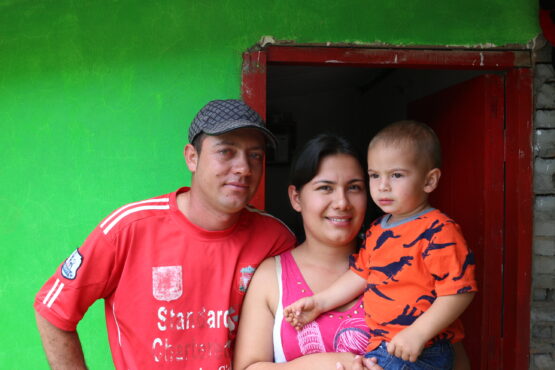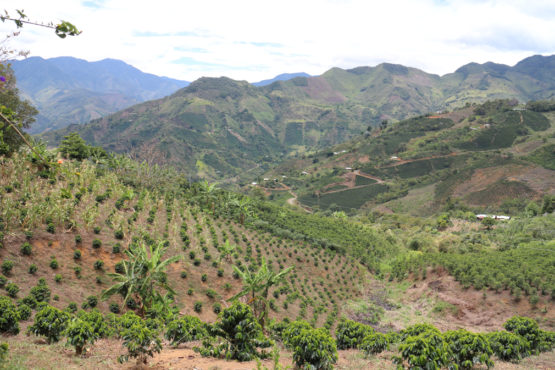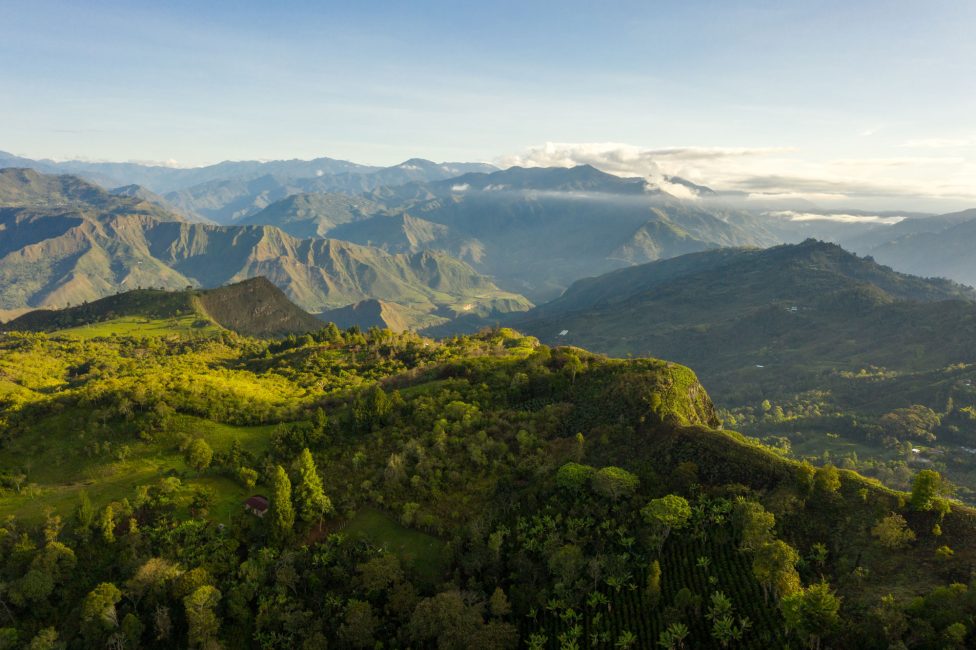El Hormiguero
Creamy and sweet, with condensed milk, almond and chocolate. Pineapple, peach and green apple and a floral finish.
This Caturra micro-lot was produced by John David Molina and his family, on their 4-hectare farm, El Hormiguero (meaning “anthill”), in the small community of El Hato, located in the municipality of Caicedo, in the state of Antioquia, Colombia.
John David is one of a younger generation of farmers in Colombia that are excited about specialty coffee production and the potential it offers for improved livelihood. Whereas many young people in regional coffee-producing areas prefer to find jobs in nearby towns or cities, rather than take on their parents’ farms, a few young farmers like John are choosing to stay on the farm. They are wholeheartedly embracing the opportunities and challenges of producing exceptional coffee, with the goal of achieving good premiums and guaranteeing themselves and their families a better future.
Finca El Hormiguero is located at 2,100m above sea level, in the high ridges of El Hato. The farm is planted with beautiful Caturra trees, which grow on the side of a deep canyon that drops down to the Cauca River, some 500m above sea level. The steep canyon walls trap warm currents, which circulate to higher ground, allowing for coffee to be grown at elevations that are unheard of in other parts of Antioquia. Cool, stable temperatures result in a very slow ripening of the cherry, resulting in very dense beans and a sweet, complex cup profile.
Smallholder farmers in this area were pioneers in planting and producing coffee at these high elevations. They were initially told by Colombia’s national coffee grower’s federation (Federacion Nacional de Cafeteros de Colombia or FNC) that it would be impossible to grow coffee in such a cool climate. Many farmers only bought land here out of necessity as it was much more affordable than at lower elevations, which were considered more prosperous for coffee production. In fact, the unique geological attributes and cool climate of the area contribute to the sweetness and complexity of the coffee. The area has since become recognised for the exceptional cup quality and characteristics and coffees produced here now attract high premiums from specialty buyers.
ABOUT CAICEDO
During the 1990s and 2000s, this area was very dangerous, with different rebel and paramilitary groups vying for control of the region. The small town of Caicedo and its surrounds witnessed extreme violence, while coffee farmers suffered exploitation and extortion. Thankfully, times have changed and Caicedo now is in a peaceful economic renaissance, where specialty coffee production is playing a crucial role in helping communities flourish and gain prosperity.
Coffee in Caicedo is farmed with traditional techniques. Fertilisation occurs around three times a year, usually after manual weeding, and pesticides are rarely used. The coffee is selectively hand-harvested, with most labour being provided by the farmers and their families.
ABOUT ANTIOQUIA
Antioquia is located in central North-Western Colombia. Coffee was introduced to the region in the latter part of the 19thcentury. Since then, this mountainous, fertile department has 128,000 hectares of coffee that is produced by a mix of large estates and tiny farms.
Antioquia only recently became more accessible to specialty coffee buyers – largely thanks to a transformation of the department led by Sergio Fajardo, who was the governor of the department in 2012-2016. Sergio transformed Antioquia’s capital city, Medellín, from a violent and dangerous place to a world-class tourist destination with a strong economy. Coffee has played a significant role in this transformation, and as access to many producers has improved, the region has become one of Colombia’s most important and celebrated coffee-producing areas.
HOW THIS COFFEE WAS SOURCED
This coffee is sourced by our export partners, Pergamino, who work with over 50 small, independent farmers in and around the town of Caicedo. Pergamino has done a lot to help promote commercialisation of specialty coffee throughout Antioquia and have actively been working to source and support coffee producers in regions where there is a high potential for quality, but that historically have not had access to specialty buyers.
During harvest, farmers like John David Molina deliver small lots (around 100-150kg) of dried parchment to Pergamino’s warehouse every 2-3 weeks. Upon delivery, a sample of the dried parchment is milled and assessed for physical attributes, including uniformity of size, presence of defects, moisture content and seed to hull ratio. If the coffee passes the physical assessment it is accepted and the farmer receives their first payment for the coffee, calculated by the weight delivered and a base rate related to the physical quality of the parchment.
The coffee is then cupped and assessed for sensory attributes. After being accepted by the team in Caicedo the coffees are transported to Pergamino’s QC lab in Medellin, where they are further assessed by an expert team of cuppers. Each lot is carefully evaluated and, based on the cup score and profile, the coffee is sorted into different grades of quality and combined into exportable sized lots. Feedback on each lot is relayed back to the producer and after it has sold a second payment is made to the producer according to premium the coffee attracted. Coffees that are kept separate and sold as individual lots, like this special micro-lot, represent the very highest quality and receive the best premiums.
Each season the team at Pergamino cups through hundreds of small lots from independent farmers, looking for coffees that exhibit excellent cup characteristics and showcase the region where they were produced. John David Molina’s coffee was selected to be processed separately as a micro-lot for its distinct character and high cup quality.
HOW THIS COFFEE WAS PROCESSED
This coffee was selectively hand-harvested, with most labour being provided by John David and his family. The coffee was processed using the washed method at El Hormiguero’s ‘micro-beneficio’ (mill).
The coffee was pulped using a small electric pulper, and then placed into a fermentation tank, where it was fermented for around 48 hours (depending on the weather and the farms’ location) and then washed using cold, clean water from surrounding streams.
It was then carefully dried (over 10–18 days) on parabolic beds, which are constructed a bit like a ‘hoop house’ greenhouse, and act to protect the coffee from the rain and prevent condensation dripping back onto the drying beans. The greenhouse is constructed out of plastic sheets and have adjustable walls to help with airflow, and temperature control to ensure the coffee can dry slowly and evenly.
Once dry, the coffee was delivered to Pergamino’s warehouse, where it was cupped and graded, and then rested in parchment until it was ready for export.
Read more about our export partner, Pergamino, here.




